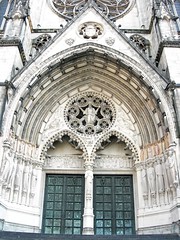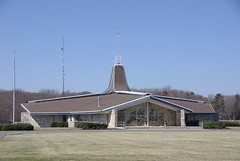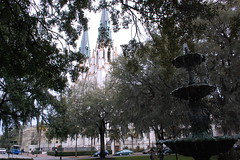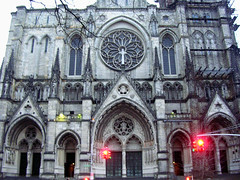The quality of flickr photography of the
newly renovated Cathedral of St. John the Divine (which could have been
otherwise) is duly impressive. This one - because of the menacing lights - was my favorite, though I recently took a few myself:
Call me prudish, but I thought St. Bernard's
stained glass vision was a bit much. Not to mention
Ruth seducing
Naomi in the stonework. Then there's the matter of the
pin-up tympanum on the National Cathedral in Washington D.C. It will come as no surprise that these are both Episcopal Cathedrals.
I'm well aware that salacious imagery on churches has a
long history, and I'm all for a nuanced
appreciation of Bernard's Song of Songs sermons, but about these depictions I just don't know. Yes, the Christian tradition teaches that the body is good - but it also teaches that we aren't. Hence, you can get away with things in the realm of literature that you can't get away with in art. Still, I would represent my level of suspicion in regard to these representations as a
yellow light, not necessarily a red one - though I'm open to being convinced otherwise.
What I can say is that at least at the Saint John the Divine portal, most will be distracted by a more remarkable carving, the
twin towers falling in an imagined apocalyptic scene, carved in... wait for it... 1997.




